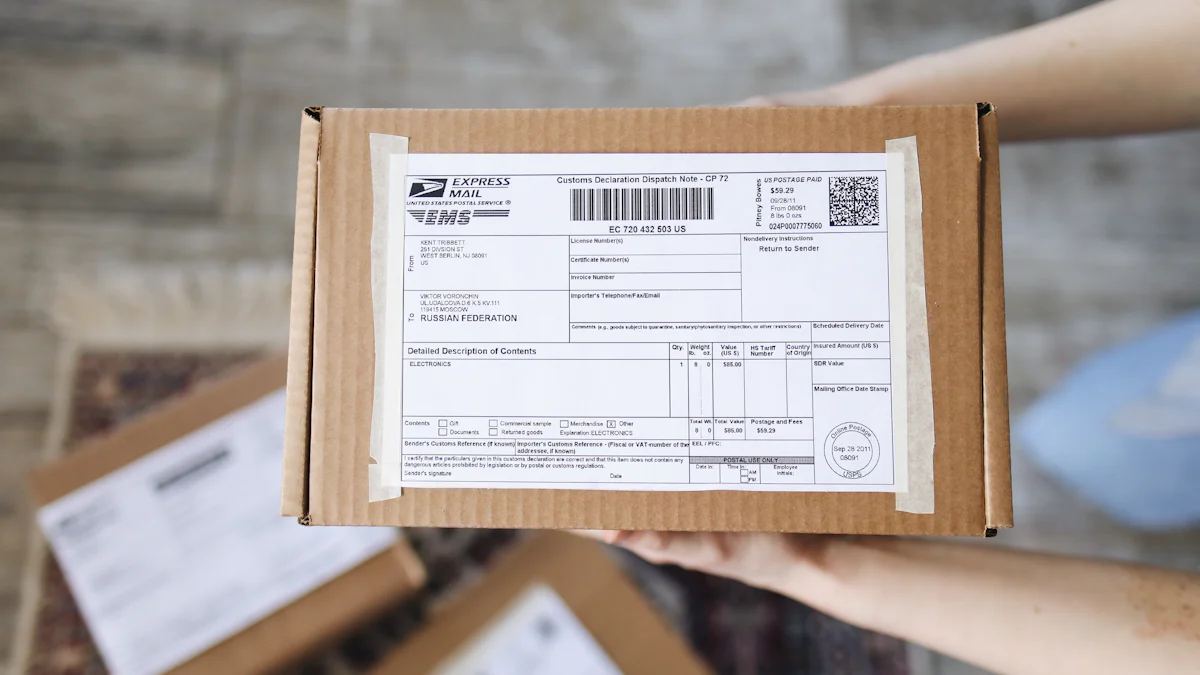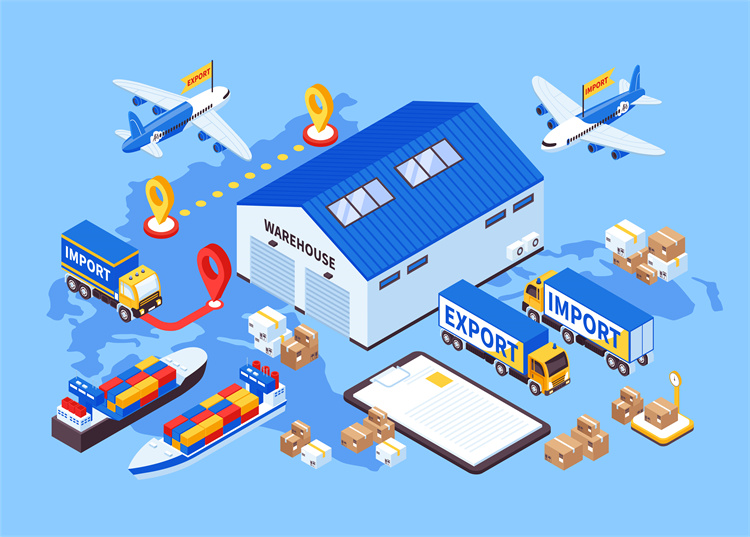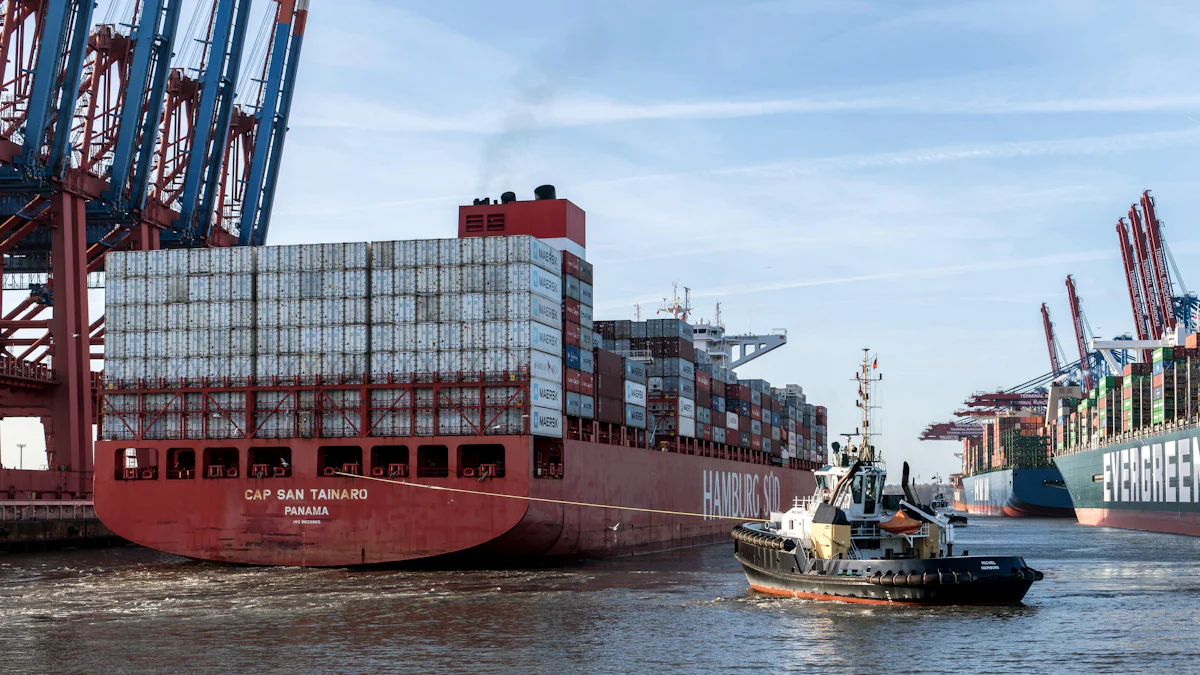How to do custom clearance in the USA

Navigating customs clearance in the United States requires precision and adherence to regulations. U.S. Customs and Border Protection plays a pivotal role in ensuring that all imports comply with federal laws. Importers must prepare accurate documentation, classify goods correctly, and pay duties promptly. In August 2024 alone, CBP processed over 2.9 million entry summaries, representing $289 billion in import value. This structured process safeguards the nation’s economic security while facilitating lawful trade. Understanding the intricacies of customs clearance is essential for smooth and efficient import operations.
Understanding US Customs and Border Protection (CBP)

The role of CBP in customs clearance
U.S. Customs and Border Protection (CBP) serves as the primary authority overseeing customs clearance in the United States. This federal agency ensures that all goods entering the country comply with established customs regulations. CBP acts as a gatekeeper, facilitating lawful trade while safeguarding national security. By monitoring imports, CBP prevents the entry of prohibited or restricted items and ensures that duties and taxes are collected accurately.
CBP also collaborates with the trade community to streamline the customs clearance process. Through partnerships with businesses and customs brokers, the agency enhances the efficiency of merchandise clearance. This collaboration strengthens international supply chains and promotes economic prosperity.
"CBP works with the trade community to ensure efficient clearance of merchandise and strengthen international supply chains."
Key responsibilities of CBP in regulating imports
CBP holds several critical responsibilities in regulating imports. First, it processes entry summaries for all shipments entering the United States. These summaries include essential details about the goods, such as their classification and value. Accurate processing ensures that the correct duties and tariffs are applied.
Second, CBP enforces customs regulations by inspecting shipments for compliance. Officers use advanced technologies and trained personnel to identify potential violations. This includes verifying the accuracy of documentation and ensuring that goods meet U.S. trade laws.
Third, CBP secures ports and borders to maintain the safety of international trade. By applying sophisticated technologies, the agency detects and mitigates risks associated with illegal activities, such as smuggling or fraud. These efforts protect both the economy and public safety.
customs clearance process

Step 1: Classify your goods using the Harmonized System (HS) code
The first step in the customs clearance process involves classifying goods accurately using the Harmonized System (HS) code.
Importers must consult the Harmonized Tariff Schedule to identify the correct HS code for their goods. Misclassification can lead to penalties or shipment rejections. Customs brokers, well-versed in the Harmonized Tariff Schedule, assist businesses in navigating this step. Their expertise minimizes errors and ensures that goods meet all regulatory requirements.
"Accurate classification of goods using the HS code is essential for smooth customs clearance."
Step 2: Prepare essential documentation
Proper preparation of import documentation is critical for a seamless customs clearance process. Importers must gather and submit several key documents to comply with U.S. customs regulations. These documents provide detailed information about the shipment, ensuring transparency and accuracy.
Commercial invoice
The commercial invoice serves as a record of the transaction between the buyer and seller. It includes details such as the description of goods, quantity, value, and terms of sale. Customs officials use this document to calculate duties and verify the shipment's authenticity.
Packing list
The packing list outlines the contents of the shipment, including the weight, dimensions, and packaging details. This document helps customs officers inspect the goods efficiently and ensures that the shipment matches the declared information.
Bill of lading or airway bill
The bill of lading (for sea freight) or airway bill (for air freight) acts as a contract between the shipper and carrier. It provides proof of shipment and includes details about the consignee, destination, and mode of transport. Customs officials rely on this document to track the shipment's journey.
Importer Security Filing (ISF)
The Importer Security Filing (ISF), also known as the "10+2" rule, applies to ocean shipments entering the United States. Importers must submit this filing at least 24 hours before the goods are loaded onto the vessel. The ISF includes information about the shipment's origin, destination, and parties involved. Compliance with this requirement enhances supply chain security and prevents delays.
Step 3: Submit your entry through the Automated Broker Interface (ABI)
The Automated Broker Interface (ABI) streamlines the submission of entry documents to U.S. customs. Importers or their customs brokers use this electronic system to file the necessary paperwork. The ABI reduces manual errors and accelerates the customs clearance process.
Through the ABI, importers submit details such as the HS code, value of goods, and importer's identification number. Customs officials review this information to assess duties and ensure compliance. Licensed brokers play a crucial role in this step by leveraging their expertise to navigate the system efficiently. Their knowledge of entry procedures and admissibility requirements ensures that shipments clear customs without unnecessary delays.
"The ABI simplifies the customs clearance process by enabling electronic submission of entry documents."
Step 4: Secure a customs bond and pay duties, taxes, and fees
Securing a customs bond is a critical step in the customs clearance process. A customs bond acts as a financial guarantee to U.S. Customs and Border Protection (CBP) that all duties, taxes, and fees associated with the shipment will be paid. Importers must obtain this bond before their goods can enter the United States. There are two main types of customs bonds: single-entry bonds and continuous bonds. Single-entry bonds cover one shipment, while continuous bonds are ideal for businesses importing goods frequently.
Importers can acquire a customs bond through a licensed customs broker or a surety company authorized by the U.S. Department of the Treasury. Brokers, well-versed in customs regulations, assist businesses in determining the appropriate bond type based on their import volume and shipment value. This ensures compliance with CBP requirements and prevents delays in the customs clearance process.
After securing the bond, importers must calculate and pay all applicable duties, taxes, and fees. These charges depend on the classification of goods, their declared value, and the Harmonized System (HS) code. Accurate payment is essential to avoid penalties or shipment holds. Licensed brokers play a vital role in this step by ensuring that duties and taxes are calculated correctly. Their expertise minimizes errors and expedites the customs clearance process.
Key takeaway: "A customs bond ensures compliance with CBP regulations and guarantees payment of duties, taxes, and fees."
Step 5: Inspection and release of goods by CBP
The final step in the customs clearance process involves the inspection and release of goods by CBP. Once the required documentation is submitted and duties are paid, CBP reviews the shipment for compliance. This review may include a physical inspection, especially if the goods are flagged for further examination. CBP officers use advanced technologies, such as X-ray scanners and non-intrusive imaging systems, to inspect shipments efficiently.
During the inspection, CBP verifies the accuracy of the declared information, including the HS code, value, and origin of goods. If discrepancies are found, CBP may impose penalties or detain the shipment until the issues are resolved. Importers can avoid such complications by ensuring that all documentation is accurate and complete.
After the inspection, CBP releases the goods for entry into the United States. Importers can then arrange for the transportation of their goods to their final destination. Licensed customs brokers streamline this process by coordinating with CBP and addressing any issues that arise during the inspection. Their knowledge of admissibility requirements and entry procedures ensures a smooth and efficient customs clearance process.
Pro tip: "Accurate documentation and compliance with CBP regulations reduce the likelihood of shipment delays during inspections."
Costs involved in custom clearance
Understanding the costs associated with customs clearance is essential for businesses importing goods into the United States. These costs vary depending on factors such as the type of goods, their value, and the applicable customs regulations. Importers must account for duties, taxes, tariffs, customs broker fees, and additional expenses to ensure a smooth and efficient customs clearance process.
Duties, taxes, and tariffs
Duties, taxes, and tariffs form the core components of the cost of customs clearance. U.S. Customs and Border Protection (CBP) calculates these charges based on the value of the imported goods, their classification under the Harmonized System (HS) code, and their country of origin. Trade agreements between the U.S. and other nations may also influence the rates.
Importers must pay these fees promptly to avoid penalties or delays. For example, duties are mandatory for goods exceeding a value of $2,500. Taxes, such as excise or sales tax, may apply to specific products like alcohol or tobacco. Tariffs, often imposed on goods from certain countries, aim to protect domestic industries. Accurate classification of goods and adherence to customs regulations help importers estimate these costs effectively.
Pro tip: "Consulting the Harmonized Tariff Schedule can help importers determine the correct duties and taxes for their goods."
Customs broker fees and their role
Customs brokers play a vital role in navigating the complexities of customs clearance. These licensed professionals assist importers by preparing and submitting required documentation, ensuring compliance with customs regulations, and calculating duties and taxes accurately. Their expertise minimizes errors and expedites the clearance process.
Customs broker fees vary depending on the scope of services provided. Some brokers charge a flat fee per shipment, while others base their fees on the value or complexity of the goods. Although these fees add to the cost of customs clearance, they often save businesses time and prevent costly mistakes. Importers benefit from the broker's knowledge of customs procedures, which ensures that shipments comply with all regulations.
"Hiring a licensed customs broker reduces the risk of delays and ensures compliance with CBP requirements."
Additional costs (e.g., storage, penalties, or inspection fees)
In addition to duties, taxes, and broker fees, importers may incur other costs during the customs clearance process. Storage fees arise when shipments are held at ports or warehouses due to delays in documentation or payment. These fees increase over time, making prompt action crucial.
Penalties represent another potential expense. CBP imposes fines for non-compliance with customs regulations, such as misclassification of goods or failure to submit required documents. Importers must ensure accuracy in all aspects of the customs clearance process to avoid these penalties.
Inspection fees may apply if CBP selects a shipment for further examination. These inspections, conducted to verify compliance with customs regulations, can result in additional charges. Advanced technologies, such as X-ray scanners, often expedite the process, but importers should prepare for potential delays and costs.
Key takeaway: "Proper preparation and compliance with customs regulations minimize additional costs and ensure a smooth clearance process."
Tips for efficient customs clearance and compliance
Research US import regulations for your goods
Understanding U.S. customs regulations is essential for smooth customs clearance. Each product category has specific rules, and failing to comply can lead to delays or penalties. Importers should consult the Harmonized Tariff Schedule to determine the correct classification and associated duties for their goods. Additionally, researching restricted or prohibited items ensures that shipments meet all legal requirements.
Staying informed about changes in customs regulations is equally important. Trade policies and tariff rates often change, impacting the cost and process of customs clearance. Reliable sources, such as the U.S. Customs and Border Protection (CBP) website, provide updates and guidance. Businesses that invest time in research reduce the risk of non-compliance and improve the efficiency of their import operations.
"Knowledge of U.S. import regulations minimizes risks and ensures compliance with customs requirements."
Work with a licensed customs broker or service provider like JusTrade
A licensed customs broker simplifies the complexities of customs clearance.
JusTrade, a specialized customs clearance service provider, offers intelligent solutions for seamless customs compliance. With advanced technology and a team of experts, JusTrade streamlines the process by integrating AI algorithms and big data analysis. Their services include commodity categorization, bonded zone expressway, and cross-border logistics. By partnering with JusTrade, businesses gain access to efficient and reliable customs solutions tailored to their needs.
"Working with a customs broker or service provider like JusTrade enhances efficiency and ensures compliance with customs regulations."
Ensure accuracy in documentation to avoid delays
Accurate documentation forms the backbone of the customs clearance process. Importers must prepare essential documents, including the commercial invoice, packing list, and bill of lading. These documents provide detailed information about the shipment, ensuring transparency and compliance with customs regulations.
Errors in documentation often result in delays or penalties. For example, misclassification of goods or incorrect valuation can trigger inspections or fines. Importers should double-check all details before submission to avoid such issues. Customs brokers play a crucial role in this step by reviewing and verifying documents for accuracy. Their attention to detail ensures that shipments clear customs without unnecessary complications.
"Accurate documentation prevents delays and facilitates smooth customs clearance."
How JUSDA and JusTrade simplify customs clearance
Overview of JUSDA’s global supply chain solutions
JUSDA offers a comprehensive suite of global supply chain solutions designed to address the complexities of international trade. With over 155 service points worldwide and a warehouse area exceeding 2,500,000 square meters, JUSDA has built a robust network to support businesses across industries. Its services span air, land, sea, and rail transportation, ensuring flexibility and efficiency in logistics operations.
JUSDA’s solutions integrate advanced technologies like IoT, cloud computing, and big data to enhance supply chain visibility and collaboration. The JusLink Intelligent Supply Chain platform enables real-time tracking and seamless communication between stakeholders. This innovation reduces delays, optimizes inventory management, and ensures compliance with customs regulations. By leveraging these tools, JUSDA empowers businesses to navigate the challenges of global trade with confidence.
"JUSDA’s global supply chain solutions combine technology and expertise to streamline operations and improve efficiency."
JusTrade’s intelligent customs clearance services
JusTrade, a specialized service under JUSDA, focuses on simplifying customs clearance through intelligent strategies. Established in 2019, JusTrade has quickly become a trusted partner for businesses seeking efficient and reliable customs solutions. Its proprietary SAAS platform integrates AI algorithms and big data analysis to automate and optimize the customs process.
JusTrade offers a range of services, including commodity categorization, bonded zone expressway, and cross-border logistics. These services ensure that goods are classified correctly, documentation is accurate, and compliance with customs regulations is maintained. The platform connects various departments, such as procurement and logistics, creating a closed-loop system that enhances efficiency. With operations in nearly 20 countries, JusTrade provides global coverage, making it an ideal choice for businesses with international trade needs.
"JusTrade’s intelligent customs clearance services eliminate manual errors and accelerate the clearance process."
Benefits of using JusTrade for seamless customs processes
JusTrade delivers significant benefits to businesses navigating the complexities of customs clearance. Its advanced digital platform reduces manual errors, enhances transparency, and provides real-time insights into the customs process. These features minimize delays and ensure that shipments comply with all regulations.
By partnering with JusTrade, businesses gain access to a team of over 500 customs experts who possess in-depth knowledge of global trade laws. These professionals assist with securing customs bonds, calculating duties, and preparing documentation, ensuring a smooth clearance process. JusTrade’s tailored solutions also help businesses reduce operational costs and improve supply chain efficiency.
Key advantages of JusTrade include:
Speed: Accelerated customs clearance through automation and AI.
Accuracy: Precise classification and documentation to avoid penalties.
Cost-effectiveness: Reduced operational expenses and optimized logistics.
JusTrade’s commitment to innovation and excellence positions it as a leader in the customs service industry. Businesses that choose JusTrade benefit from its expertise, technology, and global reach, ensuring seamless customs processes and uninterrupted trade operations.
Customs clearance in the USA demands meticulous preparation and adherence to regulations. Importers must ensure customs compliance by accurately classifying goods, preparing essential documentation, and paying duties promptly. Leveraging services like JusTrade simplifies the process, offering intelligent solutions to navigate complexities efficiently. Staying informed about evolving trade policies, such as recent U.S. efforts to address unfair practices, further enhances preparedness. By following these steps, businesses can streamline custom clearance, minimize delays, and ensure smooth imports into the United States.
See Also
Achieving Success in Global Trade Through JUSDA
JUSDA's Innovative Logistics Solutions Boost Operational Efficiency
Exploring Advanced Manufacturing with JUSDA's Logistics Insights
2024 Updates on Sea Freight Logistics You Should Know
Discover JUSDA's Latest Warehousing Innovations for Efficiency
